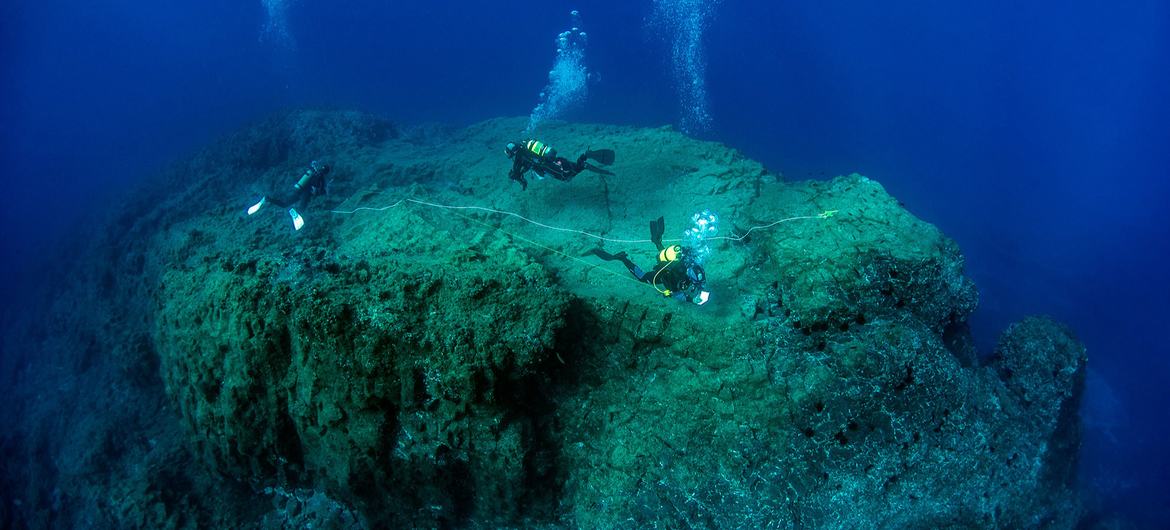UN Adopts Historic Treaty to Protect Oceans

The UN’s 193 Member States adopted a landmark legally binding marine biodiversity agreement following nearly two decades of fierce negotiations over forging a common wave of conservation and sustainability in the high seas beyond national boundaries – covering two thirds of the planet’s oceans. Here are five key points on why it is important for the world.
1. Fresh protection beyond borders
Countries now have more power to protect the high seas from pollution and overfishing. The new treaty, adopted by the Intergovernmental Conference on Marine Biodiversity of Areas Beyond National Jurisdiction (BBNJ), aims to protect the ocean for future generations.
The treaty has 75 articles that cover things like protecting marine environments, conserving biodiversity, and sharing the benefits of marine resources.
UN Secretary-General António Guterres said the treaty is a “major step forward” for the ocean. He said it gives the ocean a “fighting chance.”
 UN Adopts Historic Treaty to Protect Oceans
UN Adopts Historic Treaty to Protect Oceans2. Cleaner oceans
Plastic and toxic chemicals are killing marine life and making their way into the food chain. More than 17 million metric tons of plastic entered the ocean in 2021, and this number is expected to double or triple by 2040. If we don’t take action, there could be more plastic in the sea than fish by 2050.
The UN is working on a treaty to address this problem. The treaty would strengthen resilience and contain provisions based on the polluter-pays principle. Parties to the treaty would also have to assess the environmental impacts of any planned activities beyond their jurisdictions.
We need to take action now to protect our oceans and marine life. We can all do our part by reducing our use of single-use plastics and recycling properly.
3. Sustainably managing fish stocks
More than one third of global fish stocks are over-exploited.
The treaty underlines the importance of capacity building and the transfer of marine technology, including the development and strengthening of institutional capacity and national regulatory frameworks or mechanisms.
This includes increasing collaboration among regional seas organizations and regional fisheries management organizations.

4. Lowering temperatures
Global heating is pushing ocean temperatures to new heights, fueling more frequent and intense storms, rising sea levels, and the salinization of coastal lands and aquifers. Addressing these urgent concerns, the treaty offers guidance, including through an integrated approach to ocean management that builds ecosystem resilience to tackle the adverse effects of climate change and ocean acidification, and maintains and restores ecosystem integrity, including carbon cycling services.

5. Vital for realizing 2030 Agenda
The new agreement “is critical to addressing the threats facing the ocean. And to the success of ocean-related goals and targets, including the 2030 Agenda, the UN chief said on Monday. Some of the goals and targets include Sustainable Development Goal (SDG) 14, which aims at, among other things, preventing and significantly reducing marine pollution of all kinds by 2025. And ending overfishing through science-based management plans in order to restore fish stocks in the shortest time feasible. The new agreement will enable the establishment of area-based management tools, including marine protected areas, to conserve and sustainably manage vital habitats and species in the high seas and the international seabed area.


- Art
- Causes
- Best Offers
- Crafts
- Dance
- Drinks
- Film
- Fitness
- Food
- Jogos
- Festival
- Gardening
- Health
- Início
- Literature
- Music
- Networking
- Outro
- Party
- Religion
- Shopping
- Sports
- Theater
- Wellness



